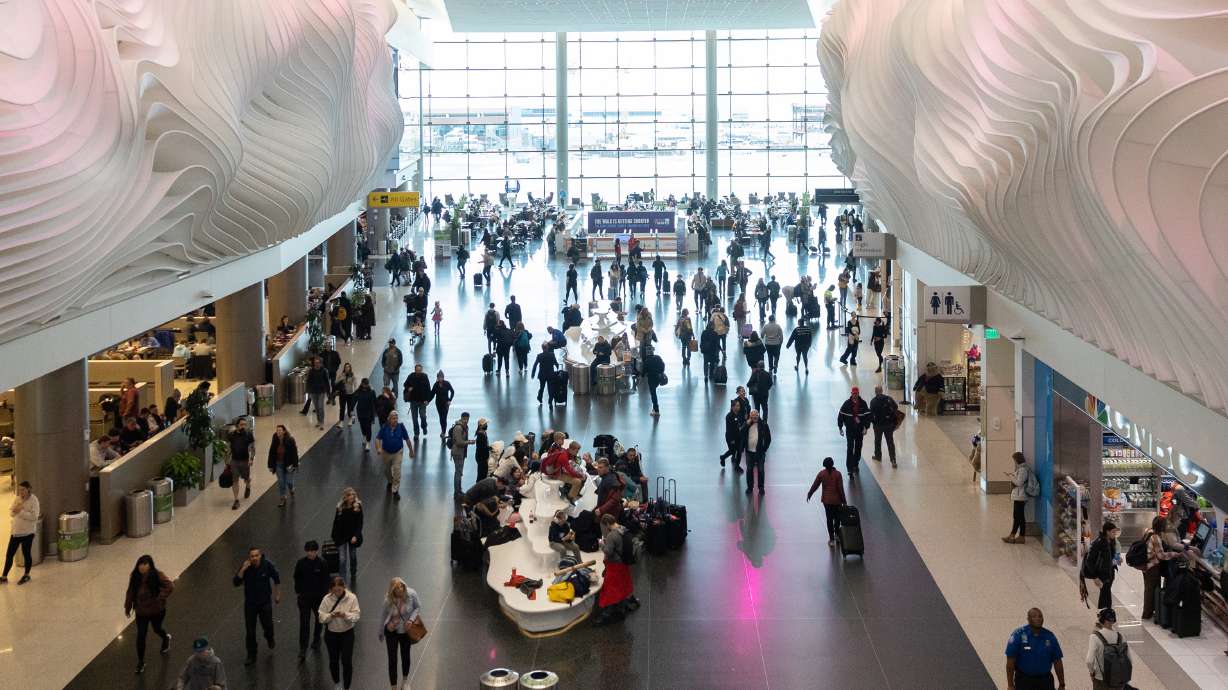Estimated read time: 4-5 minutes
This archived news story is available only for your personal, non-commercial use. Information in the story may be outdated or superseded by additional information. Reading or replaying the story in its archived form does not constitute a republication of the story.
SALT LAKE CITY — Travel within Utah and the U.S. rebounded to as close as ever to pre-COVID-19 pandemic levels this year, and that's also how the year is forecast to end with the Christmas and New Year's rush.
About 115.2 million Americans are forecast to travel between Dec. 23 and Jan. 1, 2024, as a part of the combined holiday travel period, AAA officials said Thursday. It would be about 3.4% below 2019's record-setting 119.3 million should the projections come to fruition, but it would also be 2.5 million more travelers than last year and the second-highest figure since 2000.
"The travel outline for the year-end holidays echoes what we've been seeing in travel throughout 2023. Despite high costs, more Americans are prioritizing creating memories with loved ones and exploring new destinations," said Brian Ng, AAA Utah's senior vice president of membership and travel marketing.
Projected driving trends
Most travel, as always, is expected to come by cars and trucks. The organization says they believe 103.6 million Americans will hit the road and drive at least 50 miles over the 10-day holiday period. That's about 4.4 million fewer travelers as compared to 2019, a dip of 4.1%. It would also be about 1.8% higher than what happened last year.
Those who plan to drive will notice a little less pain at the pump. The average price for regular gasoline is now $3.10 per gallon, down about 21 cents from this time last year. The average cost in Utah is actually below the national average now, falling to $2.99 as of Thursday. It's as low as $2.77 per gallon in Juab County.
All of this is much cheaper than last year's holiday rush and even from a month ago. A gallon of regular gas cost about $3.59 this time last year and $3.51 a month ago.
This is tied to a drop in crude oil prices, which normally falls by about 30% from late September into December, AAA spokesman Andrew Gross explained last week. He adds that relatively low demand and increasing supply are what's helped drive costs down this holiday season.
Related:
Meanwhile, three days in particular could be the busiest for people who do plan on traveling by car, AAA officials say, citing data provided to them by the transportation data company INRIX. Those are Dec. 23, Dec. 28 and Dec. 30, based on when people are projected to travel to and from their holiday destinations.
Bob Pishue, the company's transportation analyst, said travel delays may end up being 20% longer during the holiday rush, with longer times projected for people planning to drive to major metro areas.
He also recommends that drivers avoid normal commuting hours and use local transportation sites and apps, such as those the Utah Department of Transportation has, to see where delays are and "minimize holiday travel traffic frustrations."
A spike in non-automobile travel
Interestingly enough, airline and other forms of non-automobile travel, while just a fraction of 115.2 million projection, are projected to exceed 2019 levels. It shows how much all of these industries have recovered since the pandemic decimated travel and tourism.
Airline travel is projected to jump by 2.4% from 2019 and 4.7% from 2022 levels. AAA officials say this is because airline ticket costs are down from last year, so many Americans are expected to take advantage.
Its projection seems to mirror trends that Salt Lake City International Airport has reported this year. It ended the first half of this year on pace to break 2019 levels, and that's still the case with its latest data.
The airport reports that a little more than 22.6 million passengers went through the airport between January and the end of October, which is slightly ahead of the nearly 22.59 million reported during the same stretch in 2019 and nearly 1 million passengers ahead of last year.
"We are on track to a full recovery from the pandemic. At the height of the pandemic, a couple of years ago, it didn't seem possible," Bill Wyatt, the airport's executive director, said in August.
Bus, train and cruise levels, combined, are expected to rise by 4.1% from 2019 and 10.7% from last year, as well. In fact, AAA officials say that demand for cruises "has skyrocketed post-pandemic" and it's allowing cruises to prepare "for the wave of bookings that traditionally happens at the start of the new year."











